In Part I we learnt how recent Tour of Britain winner Marco Pinotti, one of Cadel’s lieutenants at Silence-Lotto Dario Cioni, and English Pro winning in Belgium Matt Brammeier, discovered PowerCranks and how they got in with them during their first rides.
Here in Part II, the Pros let us in on how they integrate the cranks into their daily routines, and how the cranks can greatly help with rehabilitation after an accident.
Using PowerCranks in Training
PowerCranks substantially increase the amount of muscle mass involved in the pedaling stroke, so their use during the racing season needs to be carefully integrated.
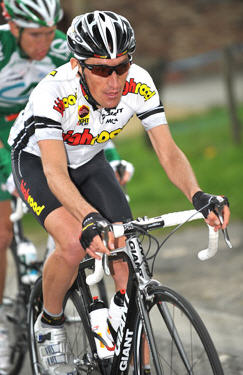
The major new muscles that are used are the hip flexors, or iliopsoas. These are very large and strong muscles (they’re the main muscles you use when doing sit ups), but they normally have little or no aerobic capacity — that can change however, as pedaling at 90rpm for an hour with PowerCranks works the muscles pretty hard: imagine doing that one-legged, and you get the idea.
The cranks improve the aerobic capacity of these muscles and – with time and enough practice — they retrain the nerves to fire in the correct way to change these normally dormant muscles so that they have the same aerobic abilities as your quadriceps.
Marco (above) has carefully integrated the cranks into his training:
“In the winter I use them mainly as a strength tool, riding with them twice a week. During the season however, I’ll just use them in one session a week, and that’s enough to keep the muscle memory. I also find nowadays that I just need ten minutes on the PowerCranks before my daily ride on the road to keep things going, and I have last year’s team issue bike with the PowerCranks setup on rollers for this.”
So what’s a typical “strength session” like Marco?
“I use the PowerCranks to do specific strength work-outs called SFR (salite forza resistenza), and a typical session would be like this:
- 60 minutes warm up with some tempo work (2×10 minutes)
- 4-6 x 5 minutes climbing in a big gear at low cadence (50-55rpm), recovering 3 minutes
- another 45-60 minutes of riding at higher cadence
“Of course the first time I did this workout it was very demanding and I arrived home really tired, but after a few sessions I improved my efficiency. After eight weeks I reached a point where I could do a complete three hour session without being near death in the end!
“My pedal cadence has been low (70-75) the first ride, but after three months I could handle a higher cadence 80-90 without problems.”
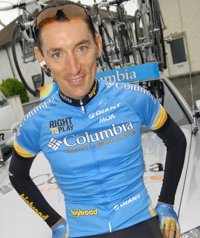
What’s Marco’s mid-season sessions like?
“I have been using the PowerCranks on the rollers every time that the bad weather forced me to train indoors. I found out that one hour spent on the rollers with them is high value, no interruptions, easy to focus on cadence, and safe.
“When I am not racing during the week I am doing (four times a week) 10 —15 minutes on them on the rollers before breakfast. I found that this helps me to set my neuromuscular system for the daily workouts, improve my base metabolism and strengthen my core muscles. I have been working on core muscles with specific off-the-bike exercises, and I have seen that the cranks help me to get leaner and stronger in my core.
“I suggested to my trainer that I do a two hours training session the day before a race, and despite his doubts, the two times I’ve done it I feel already warmed up the following day and able to keep with the fast starts of a one day pro-race.”
Does he struggle with the cranks when he’s back on them after racing?
“Well, I used the cranks for two hours only seven days after the Giro d’Italia finished this year, and I was surprised to complete the training without any soreness at all! I guess that means that I am pedaling PC-style pretty much all the time now.”
Some riders mention that they get a little sore in the “saddle area”, as the pulling upstroke keeps their bottom pressed into the seat all the time, but Marco hadn’t experienced this:
“No, I haven’t had any big problems with the cranks at all; just some different feeling that helps my nervous system to deal with new stimulus.”
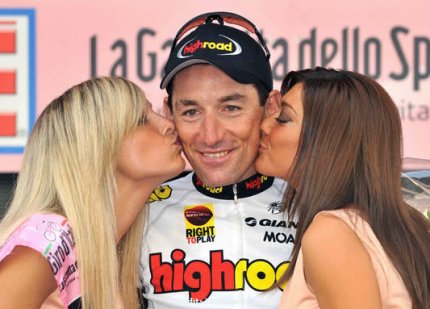
Dario introduced the cranks into his training regimen slowly:
”In the first year I did a maximum of 10 to 15 minutes on them, several times a week. I did find though that the highest cadence I could reach was 70. Also, if I was away at a Grand Tour for three or four weeks, it took me a long time to get back into the technique of using them, and I had to basically start again. That told me that I hadn’t adapted fully to the pedaling action.
“In the second year of using them I must have started to use those new muscles with my normal cranks as well, because I found that I could be away from the PowerCranks for four or five weeks, then go back to using them with no problems at all.”
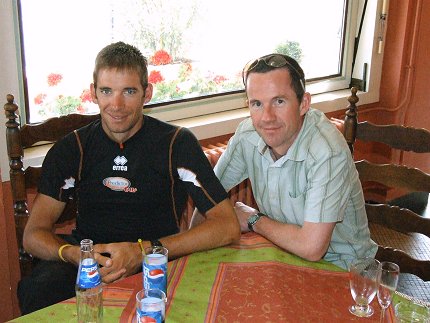
With over three years’ use of PowerCranks now, Dario can achieve some impressive results:
“When I’m on the road with the cranks, I’ve found that for a given effort I’ll be riding at 35/36 kph, whereas if I was on ‘normal’ cranks I would only be riding at 32/33 kph.
”Usually, I’ll end a training session with 15 minutes of PowerCranking – I have them on a Technogym Spin trainer for convenience. Sometimes though I’ll do a long session on them, maybe up to two hours, and in that time I’ll do five minute spells keeping the cadence at 110 revs… normally my cadence is 85/90.”
Marco doesn’t reach quite as high a cadence with the cranks:
“I average around 85 rpm on the cranks, and I have been improving this, but I never reach more than 95 rpm.”
Equipment
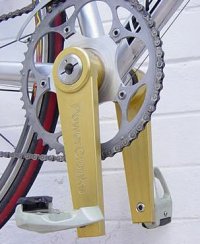
I wondered if there’s ever any hassle from equipment sponsors, but Dario didn’t think so:
“No, no, nothing like that. Although my team uses Campagnolo equipment, PowerCranks are recognised as a valuable training tool, although they’re not something I would race upon.“
Like Dario, Marco’s team understands:
“There’s never any problems with the team or sponsors – it’s fine because I use them only for training.”
Does Dario discuss the cranks with other riders?
“Amongst some of the riders on our team we talk about our training and so on, but with the guys on other teams we don’t really talk about what training we do or what equipment we use.
“But I have some friends in the peloton who I share such details with – for example I know that Daniele Nardello was introduced to PowerCranks at Mapei, and still uses them.“
Rehabilitation from Illness or Injury
None of us are 100% balanced. In other words, we all have one leg or one side which is stronger or more efficient than the other, and the difference may be very slight or quite accentuated. PowerCranks can help correct such imbalances, whether they occur naturally or as a result of an accident.
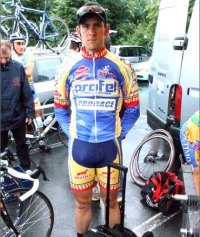
As mentioned in Part I, Matt Brammeier (right) has been using the cranks this year to rehabilitate wasted muscle tissue after a serious injury: he was knocked off his bike by a cement mixer truck whilst training in Manchester last November and broke both his legs.
“I lost a lot of muscle mass after the crash – particularly my hip flexors because I couldn’t walk for three months. I used the cranks to rebuild the wasted muscle tissue, and I’m convinced that it came back a lot quicker as a result.
“I do one legged routines on them, which are very hard, but great for rebuilding my hips. It’s not until you use these cranks that you realise how much you don’t pull up on the pedals – you think you are, but you aren’t really!
“I have been using the cranks now for several months and I can feel a definite difference in my walking and riding. My hip flexor is not quite at 100% yet but is definitely getting stronger. I can feel my pedal stroke is more of a complete circle than it used to be, and I have had a lot of comments from other riders about how smooth I look when I’m back on my normal bike!”
“So, after a few weeks of solid work on the cranks, building up from just a few minutes at a time, I was ready to start doing some specific drills.
“I worked hard doing a lot of left legged efforts, one to two minutes long, and in big gears. I alternated these with some fast spinning, trying to maintain 80rpm plus – and this was with both legs.”
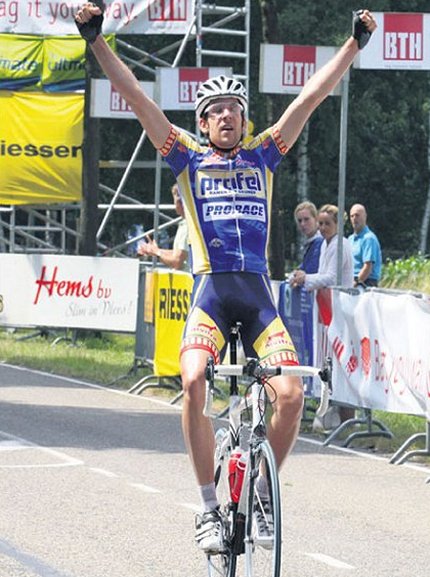
So, whether you are recovering from injury, training to win a local time trial or to pull off an international stage race win, it seems PowerCranks may just be that “secret weapon” that can help you reach your goals.
With grateful thanks to Marco, Dario and Matt for their time and help, and best wishes for a more powerful next season.
To read more about PowerCranks, head to their website



